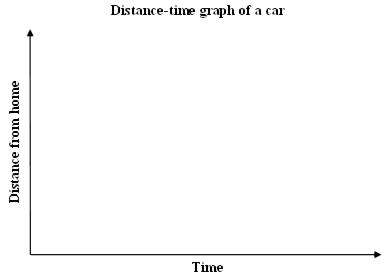Distance from home
This task is about reading information from a graph that shows the movement of a car.

|
constant speed away faster slower stop returns towards back
|
| a) |
The two graphs below show the movements of two cars travelling near home. For each graph:
|
|
i) |
 |
ii) |
 |
|
|
|
| b) |
Draw a graph which shows the following four statements (1 - 4) about the distance and speed of a car that starts a journey from home.
|
|
 |


